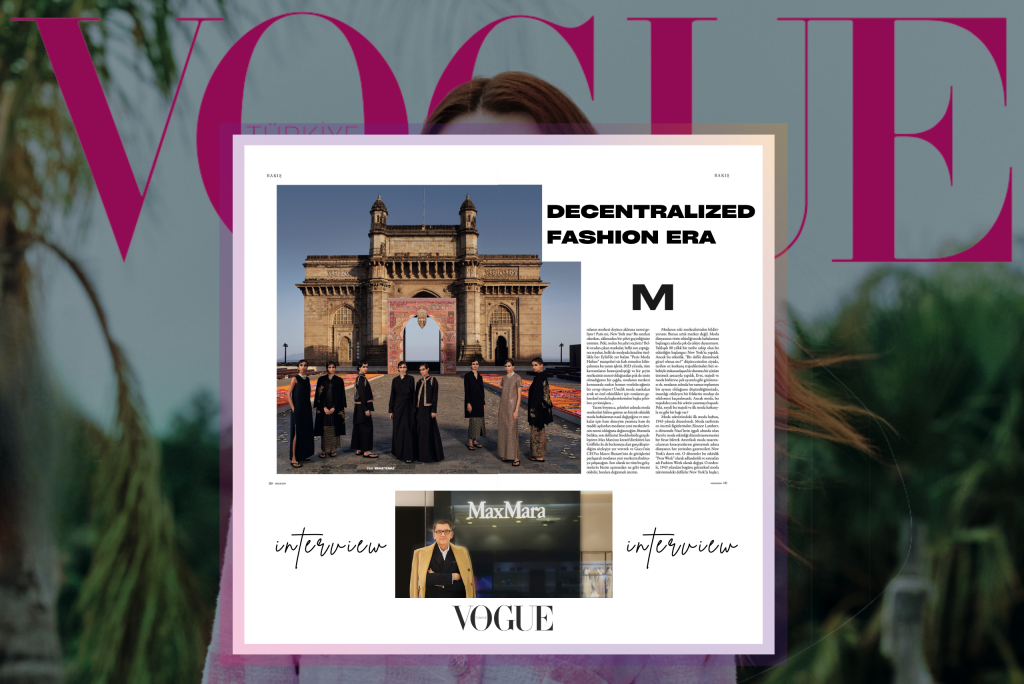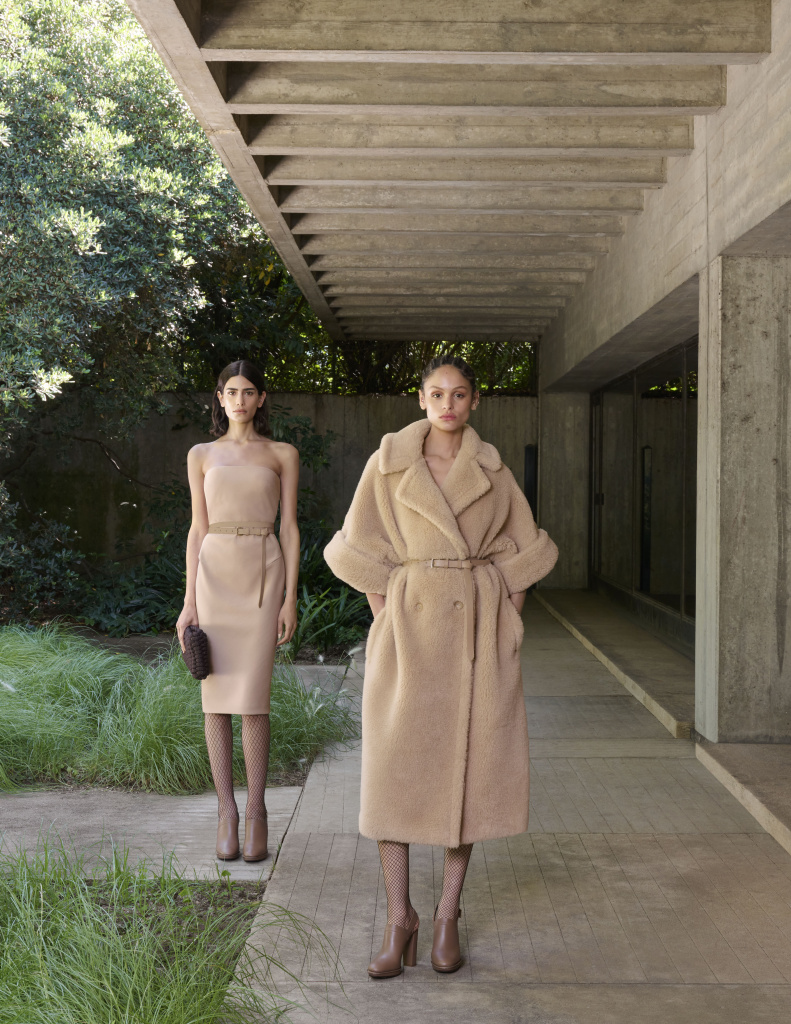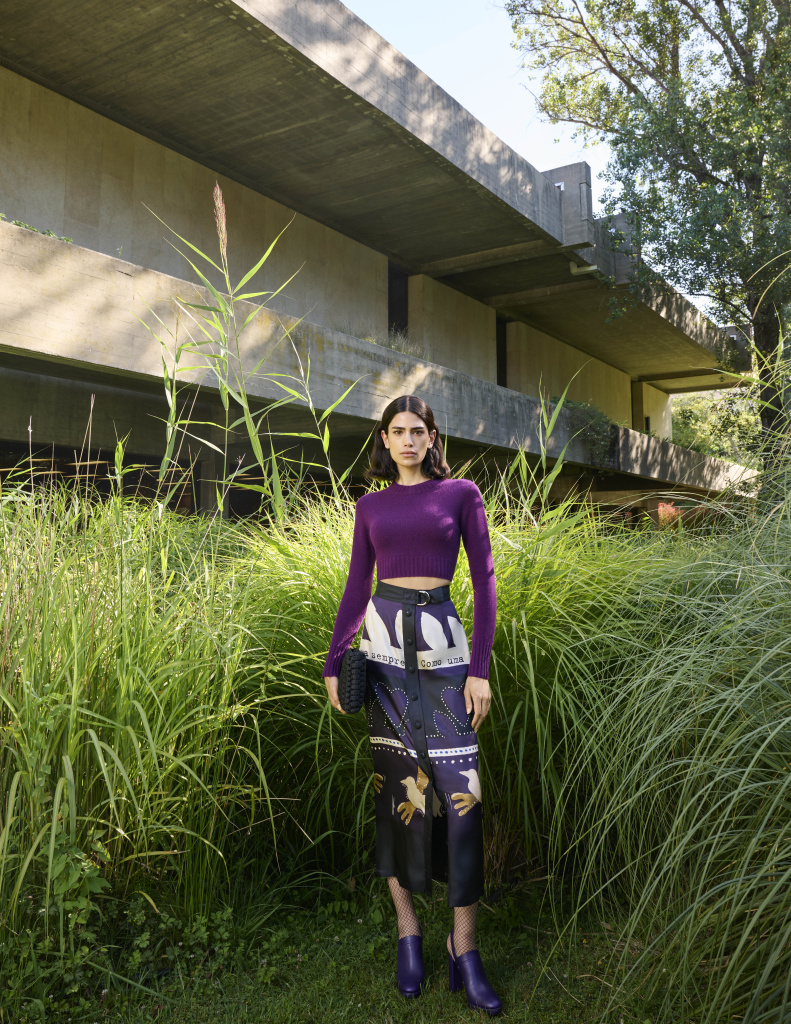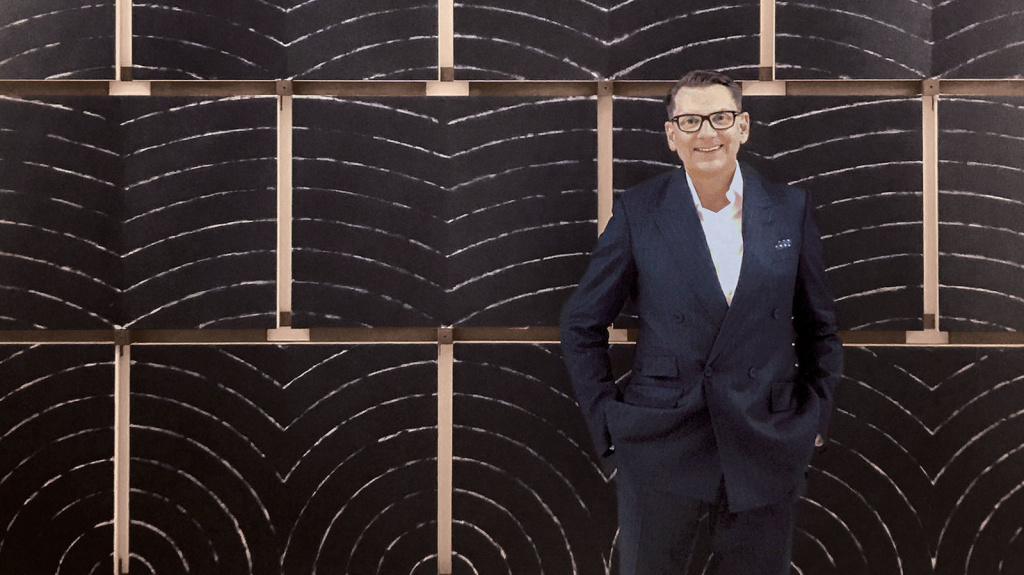Decentralized Fashion Era

Question:
In 2023, in an age where concepts are homogenized and we’re not quite sure where the center of anything is, why can we still immediately give an answer when asked about the center of fashion?
Throughout this article, I will discuss how Fashion Weeks, the biggest event that actually transforms cities into fashion centers, is changing, and where the new centers of fashion are, both in terms of creating brand experiences and financially. I will try to identify the new center of fashion by including an interview with Ian Griffiths, Creative Director of Max Mara, who recently held his last fashion show in Stockholm, and by sharing the views of Marco Bizzari, CEO of Gucci.
Some key points from my article:
The first fashion week in the fashion industry was organized in 1943 by Eleanor Lambert, one of the most important figures in fashion history. Lambert invited journalists from all over the world to New York to showcase the creations of American fashion designers, taking advantage of the fact that Paris was under Nazi occupation and unable to host fashion events. This event was originally called “Press Week” but was later renamed Fashion Week.
For this reason, the traditional fashion calendar has started with New York Fashion Week since 1943, followed by London, Milan, and Paris. Paris’s position as the closing city of fashion month is a tribute to its place in fashion history. Since 1858, when British designer Charles Frederick Worth opened his first fashion house in Paris, the city has been seen as the home of fashion. However, globalization and the internet age have brought Anglo-Saxon influences to Parisian fashion, and political, social, and economic changes in the world have allowed fashion centers to emerge in new cities.

Max Mara
2023
Max Mara
2023

Today, changing socioeconomic balances and new trends have enabled fashion brands to create different centers for themselves.
Some key points from my article:
The inspirations of creative directors and the way they share their vision of fashion with the world have gone beyond the limits of traditional fashion cities. Moreover, new formulas such as “see-now-buy-now” that change the balance between presentation, ordering, production, and sales of fashion shows have pushed brands to create new experiences outside the traditional fashion calendar. Recently, we have been witnessing brands such as Louis Vuitton, Chanel, Dior, Gucci, Max Mara, and Chanel, which are the darlings of traditional fashion calendars, leaving the pinnacle cities of high fashion and heading to new fashion cities.
Like many of the systems we see today, primarily in technologies such as Web 3.0., which eliminate centralization and monopolies, the fashion industry’s most glamorous event is also decentralizing.
Interview w/ Ian Griffiths, Creative Director of Max Mara:

Irmak Yılmaz (IY): After the first Fashion Week in the world was organized under the name of Press Week in 1943, it quickly became one of the most prominent events in the fashion industry. The cities hosting Fashion Weeks were declared as the fashion capitals, and over the years, a friendly rivalry has developed among these cities. Where is the center of fashion in 2023 in your opinion?
Ian Griffiths (IG): The recent trend of itinerant shows has provided a new impetus to the fashion industry at large but I think the established fashion weeks are still central to the fashion system. Max Mara will continue to look for new and exciting venues for Resort and Pre-Fall collections but I don’t think we would ever abandon our slot in Milan Fashion Week. There’s a long standing competition between the so called fashion capitals to be number one, but I think that New York, London, Milan and Paris each has its own flavour and strengths. And let’s not forget the up and coming fashion weeks that are keeping them on their toes, Istanbul for example.
(IY): Recently, we have observed that fashion collections are being presented at different times and locations compared to the traditional fashion show calendar and cities. Your brand has also opted for different locations to present its new collections. Could you please give details about this decision? What were the factors that influenced your choice of these specific locations?
(IG): The narrative is everything and the choice of the destination has to be such that when you think of that place, a certain type of story springs to mind. A place that invites you to dream, but to dream a dream that says something relevant to the brand, and pertinent to the moment.
(IY): Are you planning to continue organizing fashion shows in different locations in the future? If so, could you share any insights on your future plans and strategies?
(IG): Resort and Pre-Fall presentations offer huge opportunities- you are not tied to an established calendar or city, so you can be creative. I think the important thing is not to establish a pattern, or it becomes routine. We don’t feel obliged to do a different city each time. I think of Max Mara as a continuous narrative, and each collection as a new chapter in the unfolding story. I’m always curious to see where it will lead me next. There are still so many new places where I would like to go in order to explore undiscovered facets of the Max Mara persona.
(IY): How do you envision the future of the fashion show industry? Do you believe that the current system should undergo changes and be replaced by alternative forms of presentation?
(IG): I think that nothing replaces the chemistry that happens when you perform a show with a real audience. There’s a tangible energy, a real buzz. Having said that, millions of people around the world now rightly expect to be able to join in, and quite rightly so, so it’s our job to find ways to broadcast the show and give our digital audience a taste of that atmosphere that the live guests get. For Max Mara the object of any kind of show or presentation, digital or live, is to connect with the final consumer. Max Mara is about real clothes for real women, it always has been and it always will be. The digital audience has without doubt grown exponentially; for us that presents the opportunity to connect with an ever larger base.
(IY): Do you believe in the see-now-buy-now model? Does your brand implement this model? If yes, what does it mean for your brand, and how has it affected the dynamics of your collection?
(IG): We see ‘see now, buy now’ as a way of tapping into the excitement of a particular moment. Any new interface between the industry and the consumer is challenging in a good way. It’s a stimulus to think differently. So, I think that ‘see now buy now’ opens up creative possibilities.
